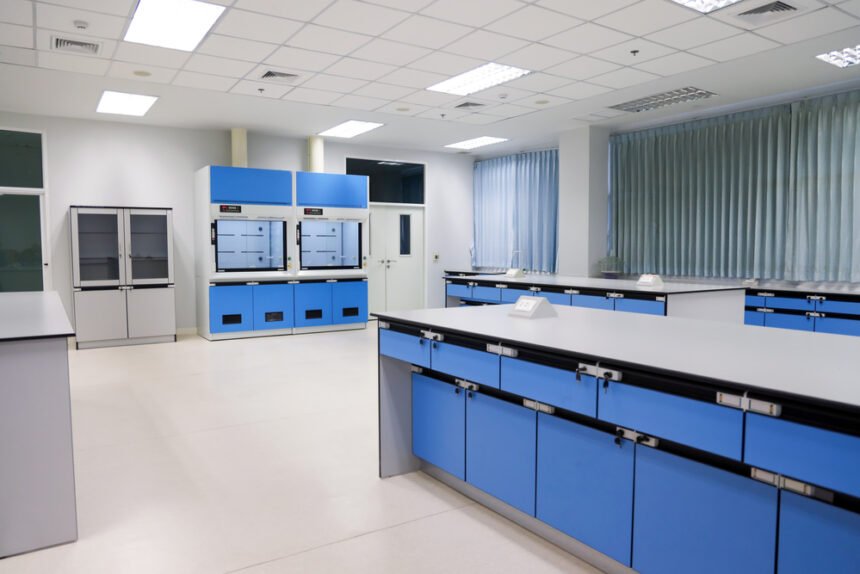What does safety look like in a lab environment? Does it come in the form of a doctored white coat? Or perhaps it resides in gloves and goggles, providing a frontline defense against the unseen dangers of experimental science? While these features indeed play a role, one of the unsung heroes in safeguarding our scientific spaces often remains overlooked – the laboratory hood. Despite its seemingly mundane presence, a laboratory hood, often referred to as a fume hood, exhibits a monumental role in maintaining lab safety. But exactly how does it do that? And why is this workhorse so pivotal for laboratory safety?
Over the course of today’s blog, we will be delving deep into understanding laboratory hoods – their significance, their operation, and the safety they guarantee. We’ll explore their structure, their functionality, and their importance in maintaining a hazardous-free, safe, and secure working atmosphere.
By paying heed to laboratory hoods, we attempt to underscore an often undervalued aspect of workplace safety and bring it to the limelight it justly merits. We believe that understanding its workings and importance can significantly enhance safety practices and foster a safe, efficient, and conducive laboratory environment.
Unfurling the Functionality of Laboratory Hoods
The primary function of a laboratory hood is to direct and control the flow of hazardous fumes away from the laboratory personnel, thereby ensuring their safety. It operates as a shield, immobilizing and diffusing harmful airborne substances released during experimental procedures.
Laboratory hoods are classified into two broad types—ductless fume hoods and ducted fume hoods. The choice between these depends greatly on your lab’s specific requirements, space constraints, and the type of chemicals used.
A well-functioning hood effectively removes harmful substances, minimizes the risk of fire, and lowers exposure to dangerous chemicals. Furthermore, it works as a layer of protection from chemical spills and reactions, making it a vital facet of lab safety.
Advantages and Disadvantages of Laboratory Hoods
One notable advantage of laboratory hoods is their protective feature against harmful chemicals. They offer a shield between the user and the experiment, ensuring minimal contact with hazardous substances.
However, as with everything, hoods have their downsides, too. They consume high amounts of energy and can often lead to increased costs. Furthermore, improper usage can sometimes lead to compromised safety.
The Right and Wrong Way to Use Laboratory Hoods
To gain maximum advantage, the proper use of a laboratory hood is crucial. This includes proper placement of the equipment to allow the airflow and regular maintenance checks.
Negligence in using the hood can lead to potential safety risks. Therefore, consistent and careful use of the hood should be a top priority for all lab personnel.
Servicing and Maintenance of Laboratory Hoods
Routine servicing and maintenance of laboratory hoods is paramount. This includes regular inspections to ensure they’re functioning correctly, and preventive maintenance to keep them in top condition.
Neglecting routine maintenance can result in a compromised system leading to an unsafe laboratory environment. Hence, it’s absolutely essential for lab safety to annually check these hoods.
The Lab Personnel’s Role in Utilizing Laboratory Hoods
The role of lab personnel in utilising laboratory hoods is pivotal for maintaining a safe and efficient working environment. It’s not just about flicking a switch and getting on with the job. Rather, it’s a process that requires knowledge, responsibility, and a keen eye for detail.
Lab personnel are required to understand the different types of hoods, their proper usage and their limitations. They should be able to identify the appropriate hood for each specific task, based on factors like the nature of the experiment, the type of chemicals being used, and any potential hazards. It’s crucial that they also understand how to properly adjust the air flow and work at the correct distance within the hood to ensure maximum protection.
Beyond this, lab personnel have a responsibility to maintain the laboratory hoods. Regular cleaning and inspections are essential to prevent any build-up of chemical residues that could potentially affect the hood’s performance. They should also be vigilant in reporting any malfunctions or issues, as prompt repair can minimise downtime and keep the lab functioning smoothly.
Overall, the role of lab personnel in utilising laboratory hoods goes far beyond simple operation. It’s a comprehensive task that calls for a solid understanding, meticulous attention to detail, and a strong commitment to safety. By fulfilling these roles effectively, lab personnel not only ensure their own safety, but contribute to the overall success and efficiency of the laboratory.Conclusion: Embracing Laboratory Hoods for Greater Safety
In conclusion, it’s clear that laboratory hoods play a silent yet significant role in ensuring lab safety. Despite their underappreciation, their functionality, and the level of protection they offer underscores their indispensability. Their effective employment coupled with regular maintenance forms the crux of securing a safe lab environment. This emphasizes that the responsibility of maintaining a safe working environment in labs is not just dependent on the hoods, but equally lies in the hands of the lab personnel.
Therefore, let’s not underestimate the value of these quiet guardians in our labs. By adequately recognizing and effectively utilizing them, we can ensure a hazardous-free, safe, and efficient laboratory environment, safeguarding the health and wellbeing of our dedicated scientific community.
As we move forward, let us remember the vital role they play and give them their due credit – for they are not just hoods, but lifelines that insulate us from harm while sparking the flame of discovery and innovation.



